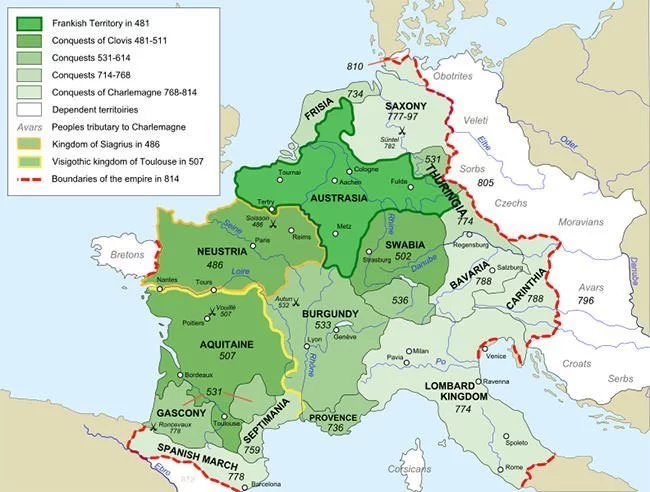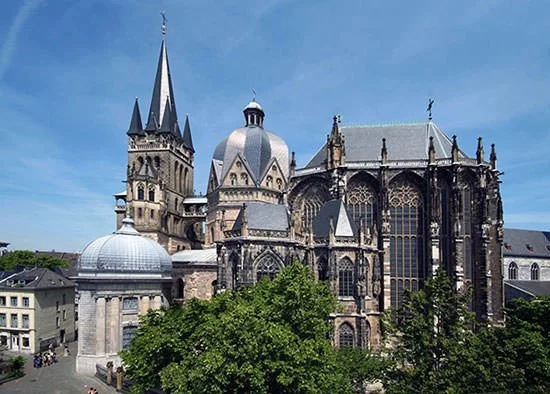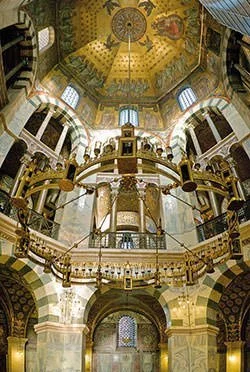Charlemagne, or Charles the Great, was a powerful king who reunited most of Western Europe through his conquests. He was an able administrator and brought about economic reforms to bring prosperity in his kingdom. Charlemagne is famous for his work towards the development of education like building of schools and standardization of curriculum. He ended the Dark Age in Western Europe by initiating the Carolingian Renaissance, a period of cultural enhancement. Charlemagne also took several steps to spread Christianity in his vast empire, paving the way for making it the dominant religion in Europe. Here are the 10 major accomplishments and achievements of Charlemagne, who is called the Father of Europe due to his immense contribution in the development of the continent.
#1 CHARLEMAGNE UNITED MOST OF WESTERN EUROPE
The fall of Western Roman Empire in late 5th century led to its vast territory being divided in numerous kingdoms without any central authority. Charlemagne became the King of the Franks in 768. He then successfully led a series of campaigns throughout his reign to unite most of Western Europe under a sole emperor for the first time since the fall of the Western Roman Empire. The expanded Frankish state Charlemagne founded was called the Carolingian Empire.

#2 He WAS THE FIRST EMPEROR OF THE HOLY ROMAN EMPIRE
In 799, Pope Leo III was physically attacked by a faction of Romans. He flew to Charlemagne and asked for his aid. Charlemagne assisted the Pope and restored his power. This led to Pope Leo III crowning Charlemagne ‘Emperor of the Romans’ in Saint Peter’s Basilica on December 25, 800. Charlemagne thus became the first Holy Roman Emperor and an empire rivalling the Eastern Roman or Byzantine Empire was created. This is considered by historians as one of the most important moments in world history.

#3 He PLAYED A VITAL ROLE IN THE SPREAD OF CHRISTIANITY ACROSS EUROPE
Charlemagne was devoted to Christianity and took several steps to spread the religion across his vast empire. He gave money and land to the Christian church and protected the popes. Through his religious reforms he strengthened the church’s power; educated the clergy and improved their skills; and standardized liturgical practices. He had Benedict’s rule copied and distributed to encourage monks throughout Western Europe to follow it as a standard. He also took an intense interest in church music and ensured its propagation and adequate performance throughout his empire.

#4 HE WAS THE DRIVING FORCE BEHIND THE CAROLINGIAN RENAISSANCE
At his royal court in Aachen, Charlemagne gathered the cream of available intellect, most notably the English scholar Alcuin of York. Supported by these scholars, he started an era which, among other things, saw the flowering of scholarship, literature, art, and architecture. Known as the Carolingian Renaissance, it ended the cultural stagnation of the Dark Age which had marred Europe for centuries and laid the foundation for the rise of the Western civilization.

#5 HIS STANDARDISED CURRENCY RESULTED IN IMPROVED COMMERCE
Charlemagne abolished the monetary system based on the gold standard for several reasons, most prominently shortage of gold. He established a new standard based upon a pound of silver, the livre. It was a unit of both money and weight. The standardization of currency made trade easier and helped the continent to prosper. The livre was subdivided into 20 sous, each of 12 deniers. This system and the denier itself served as the model for many of Europe’s currencies, including the British pound, Italian lira, Spanish dinero and the Portuguese dinheiro.
#6 HE ORDERED THE CONSTRUCTION OF THE FAMOUS PALATINE CHAPEL IN AACHEN
Carolingian architecture was inspired from Early Christian and Byzantine architecture though it also had innovations of its own. There was increased architectural activity during the reign of Charlemagne with his capital Aachen being the center of a major building program that included the Palatine Chapel, a masterpiece of Carolingian architecture that served as Charlemagne’s imperial church. Another famous Carolingian style building is the Lorsch Abbey in Lorsch, Germany.

#7 He IS CONSIDERED THE SPONSOR OF MEDIEVAL EDUCATION
Charlemagne realized the importance of learning and he has been regarded by historians as the sponsor of medieval education. He ordered the creation of schools leading to expansion of the educational system. Also measures were taken to revitalize existing schools, standardize curriculum across all schools and increase the number of students. Charlemagne’s educational reforms provided the basic tools – schools, curricula, textbooks, libraries, and teaching techniques, upon which later cultural revivals would be based.
#8 PRESERVATION OF CLASSICAL LITERATURE WAS AIDED BY HIS INITIATIVES
Recognizing the importance of manuscripts in cultural revival, Charlemagne formed a library and ordered the copying of not only religious texts but also classical literature. Most of the presently surviving works of classical Latin were copied and preserved by Carolingian scholars. The earliest manuscripts available for many ancient texts have survived due to Charlemagne’s initiatives. A text that survived till the Carolingian Renaissance is most probably still in existence.
#9 CAROLINGIAN MINUSCULE WAS CREATED UNDER HIS PATRONAGE
As part of the educational reforms of Charlemagne, a new form of writing was created that was more legible, less wasteful of space and made copying easier. Known as Carolingian minuscule, this new script was promoted and developed as the calligraphic standard in Europe. Carolingian minuscule was the writing standard in Europe until around 1200, was revived during the Italian Renaissance and later became the model for modern typefaces. Charlemagne also encouraged Latin literacy throughout his kingdom. He thus provided a common language and writing style for communication across most of Europe.

#10 HE MAINTAINED ORDER AND PROSPERITY
Apart from being a skilled military strategist, Charlemagne was also an efficient administrator. A notable administrative reform was the implementation of a system by which he could supervise his administrators in even the most distant lands. His personal representatives, known as missi dominici (palace inspector), were given wide powers and regularly inspected their assigned districts. The system of missi dominici is considered a highly intelligent and important innovation of the Carolingian government.

CHARLEMAGNE’S EDUCATION
Among the most important contributions of Charlemagne is his work done for the development of education. His focus on education can be gauged from the fact that he provided his children, even his daughters, with the best of education. It is ironical that the man who is called the sponsor of medieval education was himself unable to write, even though he did make an effort in old age. His biographer Einhard states this about his endeavor, “His effort came too late in life and achieved little success”. Charlemagne’s ability to read has also been questioned. He did learn to speak Latin and understood a bit of Greek.


Very useful to know the origin of the british pound sterling.
This really helped thank you so much.
Happy to help.